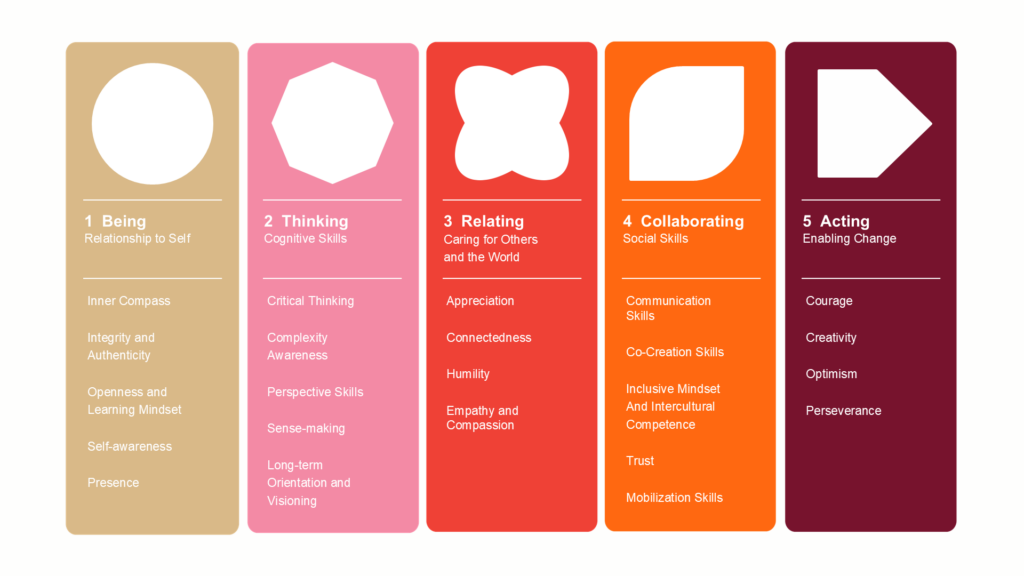As the clock ticks down toward the 2030 deadline for the United Nations Sustainable Development Goals (SDGs), the global community faces a sobering reality: many targets are not on track. Why do we fall short of acting?
Despite a growing arsenal of technologies and bold policy commitments, something critical is missing. Experts and practitioners are increasingly pointing to a less tangible but deeply influential factor: the inner development of the people driving change.
Inner Development Goals
This is where the Inner Development Goals (IDGs) come in. IDGs is a research-backed framework aimed at cultivating the psychological, emotional, and relational skills required for long-term, sustainable transformation.
The IDGs were launched in 2022 following an extensive global collaboration involving over 1,000 researchers, educators, and practitioners. The initiative was co-founded by Swedish non-profit 29k, the Inner Foundation, and the Stockholm School of Economics.
Their central thesis is bold but straightforward. Achieving the SDGs depends not only on external structures, like innovation, funding, or regulation. But also on internal capabilities such as self-awareness, resilience, empathy, and moral courage.
“We’re trying to solve 21st-century challenges with 20th-century mindsets,” says Tomas Björkman, co-founder of the Inner Development Goals initiative. “The IDGs are about expanding our capacity to meet complexity, not just manage it.”
The five dimensions of inner development
The IDG framework outlines five core dimensions, each encompassing a cluster of skills and qualities deemed essential for systemic change::
- Being – cultivating self-awareness, presence, integrity, and purpose.
- Thinking – embracing complexity, practicing perspective-taking, critical reflection.
- Relating – developing empathy, compassion, and a sense of interconnectedness.
- Collaborating – building trust, holding dialogue, resolving conflict constructively.
- Acting – showing courage, perseverance, and the ability to act in alignment with one’s values.

Why this matters for ESG professionals
For professionals working in environmental, social, and governance (ESG) roles, the relevance is clear. Many sustainability efforts don’t fail for lack of knowledge, but because of implementation. They fail in interpersonal breakdowns, leadership gaps, or an inability to navigate ambiguity and resistance.
The IDGs offer not another checklist, but a mirror. They help ESG professionals develop the presence, trust, and systems-thinking needed to lead across complexity, not just within silos.
Organizations using the IDG framework report improvements not just in team cohesion and innovation, but also in employee well-being and retention, factors critical to sustained ESG performance.
A corporate case: IKEA’s inner leadership shift
One prominent example is Inter IKEA Group, the holding company behind the IKEA brand. Facing the complex challenge of operationalizing sustainability targets across a global business, IKEA recognized that technical training wasn’t enough. Something subtler was missing: the inner capacity to navigate uncertainty, engage deeply, and lead authentically.
To address this, Inter IKEA integrated the IDG framework into its leadership development programs. Through a series of facilitated workshops, leaders engaged with all five IDG dimensions. Topics like self-reflection, emotional resilience, and inclusive dialogue were explored not as abstract ideals, but as real capacities tied to the company’s transformation agenda.
Over time, the impact became visible. Teams reported improved cross-functional collaboration and a stronger alignment between personal purpose and corporate strategy. Sustainability was no longer something to implement, it became something to embody. It was a cultural shift that made sustainability feel less like a task and more like a shared responsibility.
The IKEA-case illustrates a deeper insight: sustainable leadership is not only about technical expertise, but about who the leader is willing to become. In Inter IKEA’s journey, the IDGs provided both a language and a pathway for that becoming.
A necessary critique and a renewed perspective
The IDG movement is gaining traction across sectors from education to healthcare to manufacturing. But it is not without critics. Some worry that an overemphasis on personal development could distract from necessary structural reforms. Yes, there’s a risk that we reduce complex societal crises to exercises in personal well-being, that we meditate while systems collapse. But that is not the point.
The IDGs are not an escape from systems thinking. They are a deepening of it. When framed correctly, the IDGs can complement, not replace, systems thinking. They offer what most strategies lack: a vocabulary for the human dimension of change.
From roadmaps to real change
As ESG leaders wrestle with increasingly complex demands, the need for holistic leadership is becoming impossible to ignore. Technology can scale and policy can guide. But only humans can choose to see differently, to act with integrity, to lead with presence.
The Inner Development Goals offer an inner compass. Not to save the world, but to meet it: fully, courageously, humanly. For ESG professionals, this is not a nice-to-have, it’s foundational. The IDGs offer a timely recalibration: they put the human being back at the center of the sustainability conversation. Not as a consumer or stakeholder, but as an agent of transformation.
Because in the end, real change begins not with new systems or smarter tools, but with people willing to grow, adapt, and lead from within. It starts with who we are willing to become.



